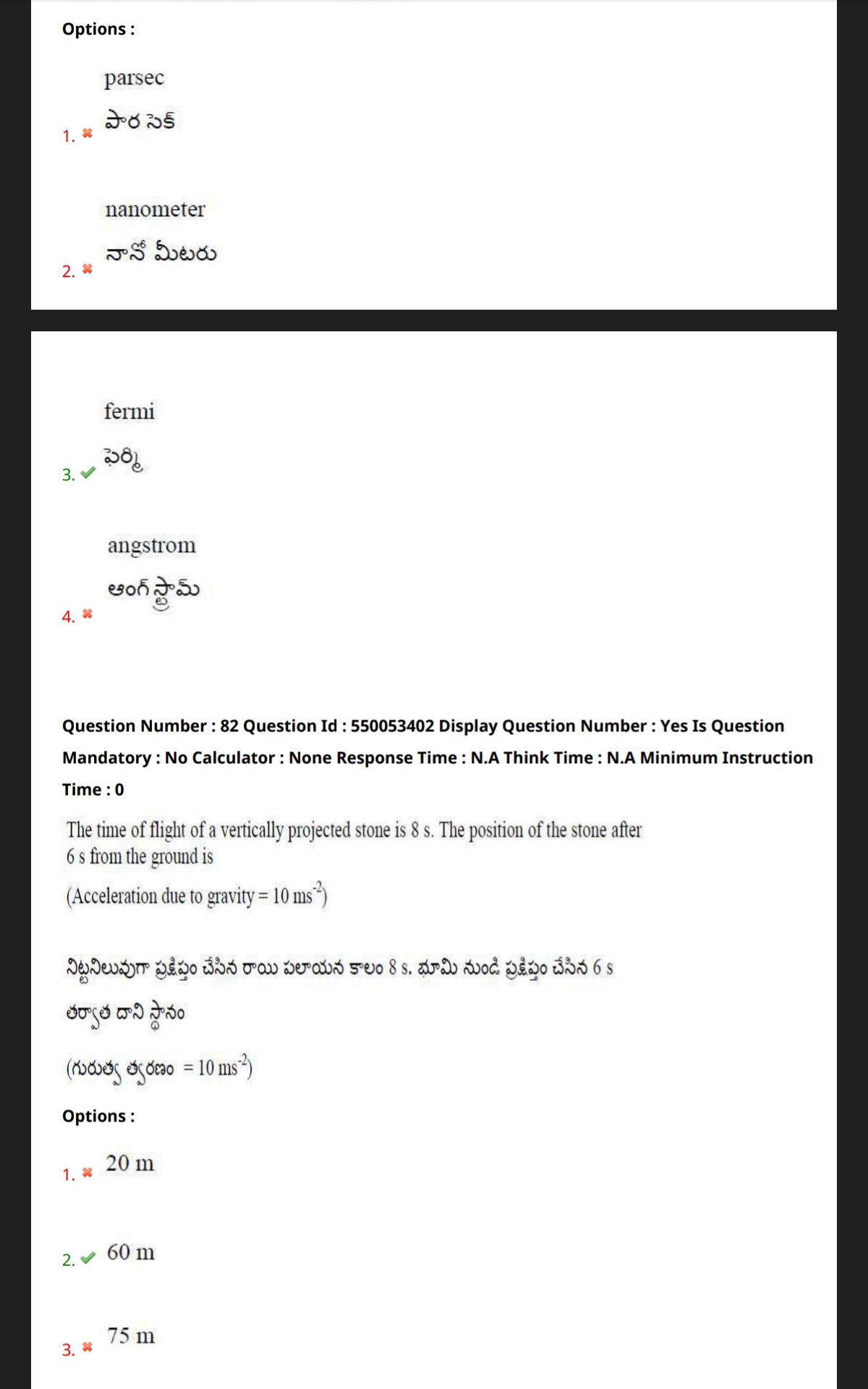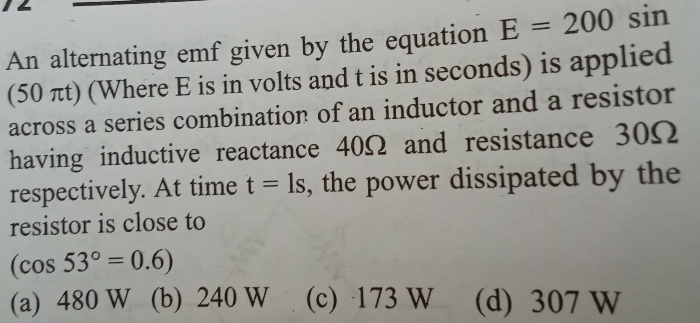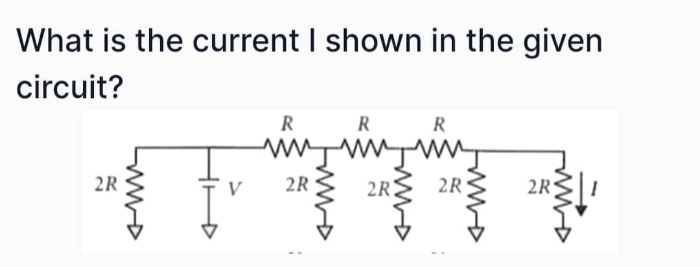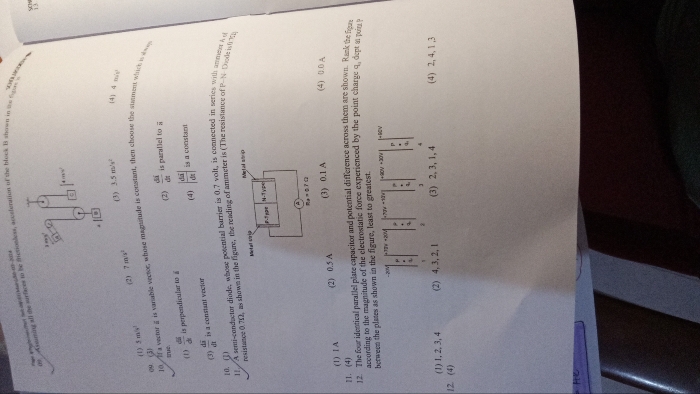JEE Class main Answered
Please explain all 3 parts in detail.
ThanQ!
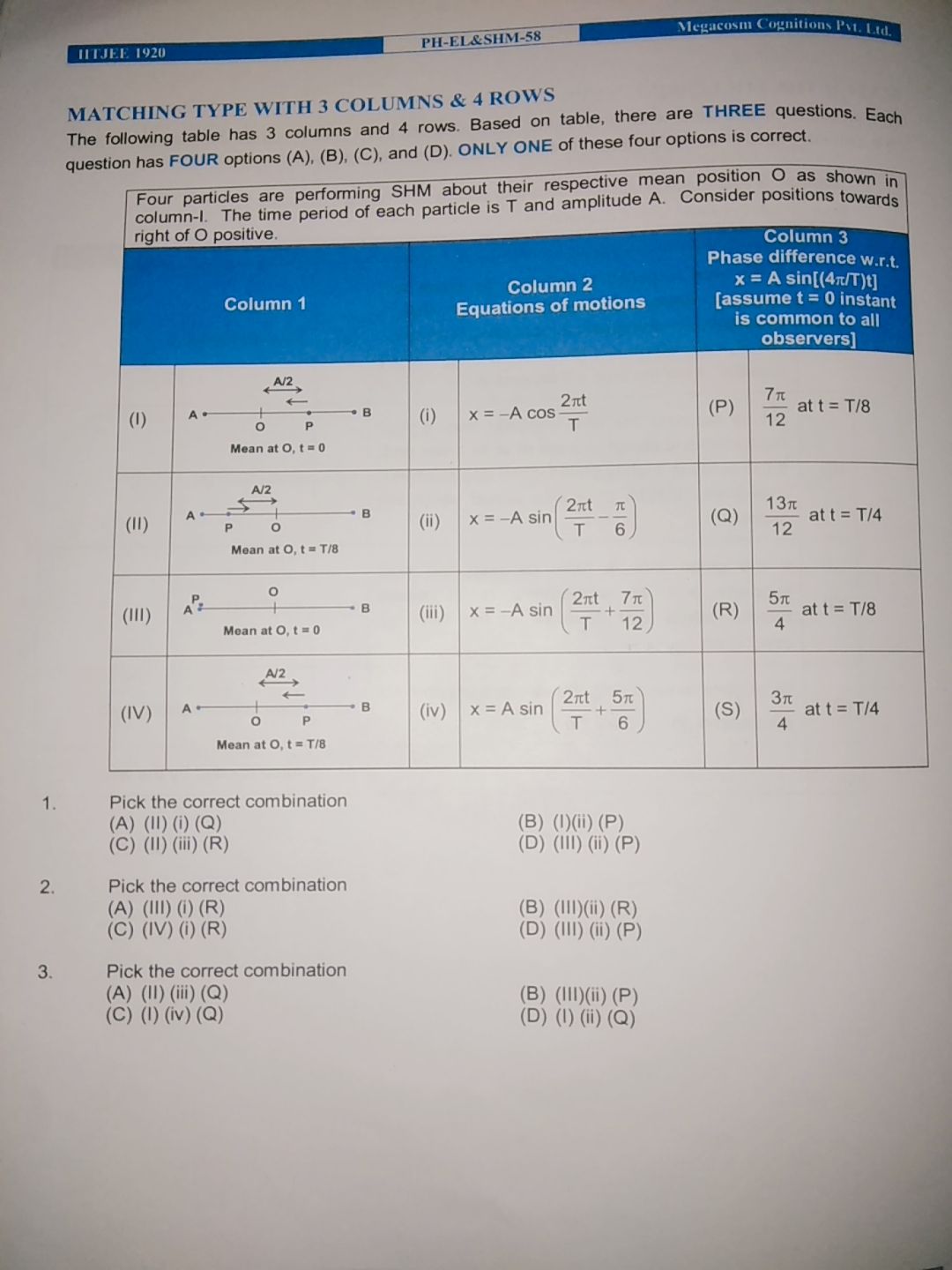
Asked by jhajuhi19 | 14 Mar, 2020, 12:15: PM
First from the given figure in column-1, we will work out the equation of motion and
the required phase difference as per column-3 at t = T/4 and at t = T/8
case (I)
Let eqn. of motion , x = A sin [ (2π/T) t + Φ ]
From given figure, we get angular position 5π/6 at t = 0
hence , [ (2π/T) t + Φ ] = 5π/6 or Φ = 5π/6
Hence eqn. of motion , x = A sin [ (2π/T) t + ( 5π/6 ) ]
Above eqn. of motion can be written as, x = A sin [ π + (2π/T) t - ( π/6 ) ] = - A sin [ (2π/T) t - ( π/6 ) ]
Phase difference φ with respect to [ (4π/T) t ] at time t is given by,
[ (4π/T) t ] + φ = [ (2π/T) t + ( 5π/6 ) ]
at t = T/4, we get φ = π/3 ; at t = T/8 , we get φ = 7π/12
----------------------------------------------------------
case (II)
Let eqn. of motion , x = A sin [ (2π/T) t + Φ ]
From given figure, we get angular position 11π/6 at t = T/8
hence , [ (2π/T) t + Φ ] = 11π/6 or Φ = 19π/12
Hence eqn. of motion , x = A sin [ (2π/T) t + ( 19π/12 ) ]
Above eqn. of motion can be written as, x = A sin [ π + (2π/T) t + ( 7π/12 ) ] = - A sin [ (2π/T) t + ( 7π/12 ) ]
Phase difference φ with respect to [ (4π/T) t ] at time t is given by,
[ (4π/T) t ] + φ = [ (2π/T) t + ( 19π/12 ) ]
at t = T/4, we get φ = 13π/12 ; at t = T/8 , we get φ = 4π/3
-------------------------------------------------------------------------------
case (III)
Let eqn. of motion , x = A sin [ (2π/T) t + Φ ]
From given figure, we get angular position 3π/2 at t = 0
hence , [ (2π/T) t + Φ ] = 3π/2 or Φ = 3π/2
Hence eqn. of motion , x = A sin [ (2π/T) t + ( 3π/2 ) ]
Above eqn. of motion can be written as, x = - A cos [ (2π/T) t ]
Phase difference φ with respect to [ (4π/T) t ] at time t is given by,
[ (4π/T) t ] + φ = [ (2π/T) t + ( 3π/2 ) ]
at t = T/4, we get φ = π ; at t = T/8 , we get φ = 5π/4
-----------------------------------------------------------------------------------
case (IV)
Let eqn. of motion , x = A sin [ (2π/T) t + Φ ]
From given figure, we get angular position 5π/6 at t = T/8
hence , [ (2π/T) t + Φ ] = 5π/6 or Φ = 7π/12
Hence eqn. of motion , x = A sin [ (2π/T) t + ( 7π/12 ) ]
Phase difference φ with respect to [ (4π/T) t ] at time t is given by,
[ (4π/T) t ] + φ = [ (2π/T) t + ( 7π/12 ) ]
at t = T/4, we get φ = π/12 ; at t = T/8 , we get φ = π/3
--------------------------------------------------------------
Qn.(1) Correct combination :- (B) (I) (ii) P
Qn.(2) Correct combination :- (A) (III) (i) R
Qn.(3) Correct combination :- (A) (II) (iii) Q
Answered by Thiyagarajan K | 14 Mar, 2020, 03:57: PM
Application Videos
JEE main - Physics
Asked by gamingbadboy085 | 01 May, 2024, 06:28: PM
JEE main - Physics
Asked by bhargavreddynellaballi | 30 Apr, 2024, 08:18: AM
JEE main - Physics
Asked by ravichandraravula66 | 29 Apr, 2024, 11:20: AM
JEE main - Physics
Asked by kmani310507 | 28 Apr, 2024, 04:38: PM
JEE main - Physics
Asked by arivaryakashyap | 23 Apr, 2024, 10:40: AM
JEE main - Physics
Asked by ratnadeep.dmr003 | 21 Apr, 2024, 11:06: PM
JEE main - Physics
Asked by ksahu8511 | 19 Apr, 2024, 11:55: AM
JEE main - Physics
Asked by mohammedimroz | 13 Apr, 2024, 09:48: PM
JEE main - Physics
Asked by medhamahesh007 | 02 Apr, 2024, 11:11: AM
JEE main - Physics
Asked by gundlasumathi93 | 31 Mar, 2024, 02:13: PM






